Why the Female Cardinal Might Be the Most Underrated Beauty in Your Backyard
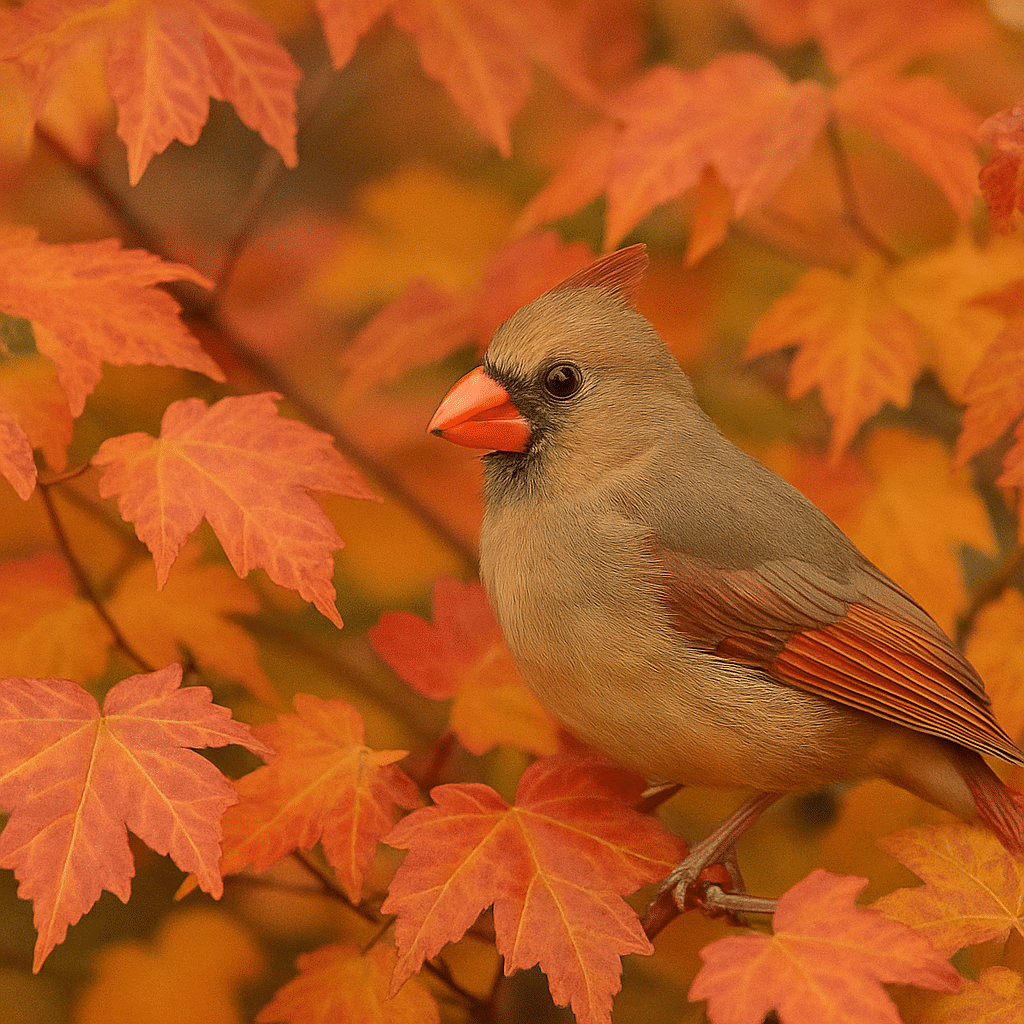
When people think about cardinals, they usually picture that fiery red flash darting through the trees. But here’s the deal: the female cardinal deserves just as much love — if not more.
She’s the quiet power behind the scenes. She’s the steady hand that keeps the future of the species alive. She’s elegant without being flashy, strong without putting on a show. And honestly, once you get to know her, you start seeing beauty through a whole new lens.

Key Takeaways
| Topic | Quick Facts |
|---|---|
| Main Feature | Warm tan plumage with reddish accents |
| Bill Shape | Thick, red-orange for cracking seeds |
| Unique Behavior | Females sing too — sometimes better than males |
| Nesting Role | Builds intricate, layered nests mostly solo |
| Habitat | Found across North America, especially East and South |
| Favorite Foods | Seeds (sunflower, safflower), berries, insects |
| Fun Fact | Named state bird for 7 U.S. states |
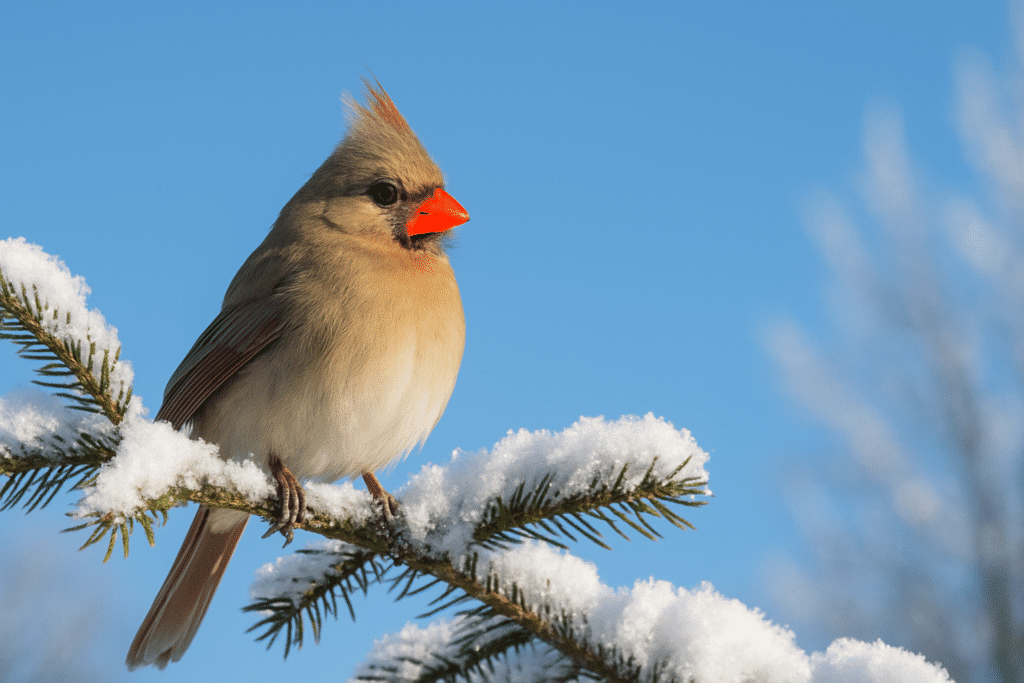
What Does a Female Cardinal Look Like?
First thing you’ll notice? She’s not red.
At least, not head-to-toe like her male counterpart.
And she’s not exactly a yellow cardinal either.
Female cardinals rock a soft tan coat that’s brushed with hints of reddish-orange on the wings, tail, and crest. Her bill is thick and bright red-orange — a real standout against the more neutral tones of her feathers. And yes, she’s got that famous crest on her head, just like the males, although it can sometimes be a little smaller.
Around her eyes and beak, you’ll spot a charcoal or black mask. It’s lighter and less dramatic than the male’s, but it’s there if you know where to look.
Why the subtle colors?
It’s survival. Nesting females need to stay hidden from predators. That muted beauty isn’t just about looks — it’s a built-in safety net.
How Can You Tell a Female, a Male, and a Juvenile Cardinal Apart?
Males: Fire-engine red, bold black mask, bright red-orange bill.
Females: Warm tan or grayish-brown with reddish highlights, soft black mask, same red-orange bill.
Juveniles: Brownish overall with a dark beak (not red yet). As young males grow, patches of red start sneaking in, but during those awkward teenage weeks, it’s a mix of brown and patchy red.
Pro Tip: If the bill isn’t fiery red yet, you’re looking at a young bird.
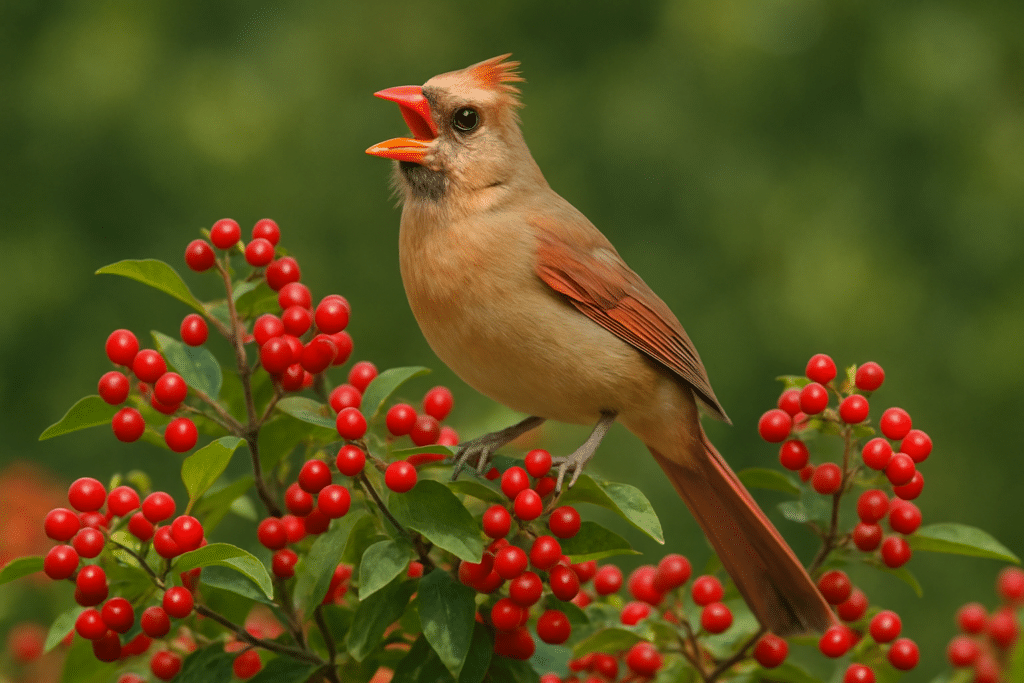
Can a Female Cardinal Sing?
Absolutely — and they’re good at it.
Most birds leave the singing to the guys. Not cardinals.
Both sexes belt out tunes, and female cardinals sometimes weave even more complicated songs than the males.
Females use their songs to:
- Settle territory disputes.
- Strengthen the bond with their mates.
- Communicate nesting needs (especially while sitting on eggs).
Sometimes you’ll hear a female singing from the nest, almost like she’s calling out an Amazon order: “Hey, bring me food. And hurry!”
Pairs even sing duets during breeding season — a love song that cements their bond and shows the neighborhood they mean business.
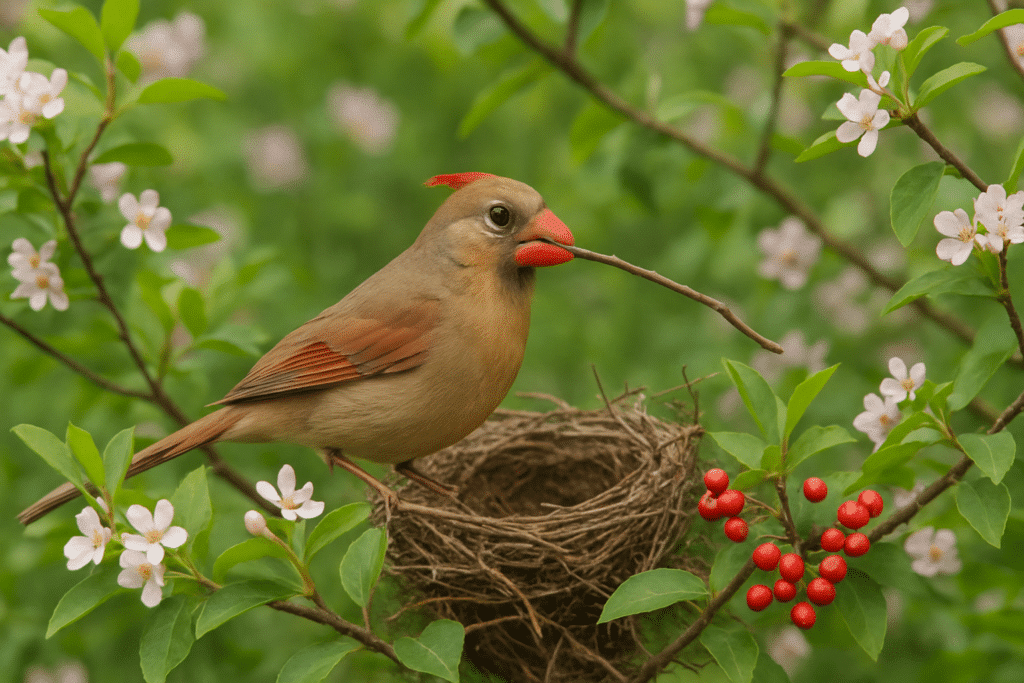
Where Do Female Cardinals Build Their Nests?
Short answer: where it’s dense and safe.
When it’s time to nest, the male might help scout locations, but the female cardinal takes on most of the heavy lifting.
Here’s how she builds it:
- Outer Shell: Coarse twigs (and sometimes trash — she’s resourceful).
- Second Layer: A mat of leaves.
- Third Layer: Shredded grapevine bark or similar flexible fibers.
- Inner Lining: Soft grasses, pine needles, stems, and tiny rootlets.
She crushes twigs with her beak to make them more pliable, then twists her body to form a snug, cup-like shape.
Fun stat:
A typical nest measures about 4 inches across and 2–3 inches high, and it’s usually tucked into shrubs or small trees 3–10 feet above the ground.
And no — they don’t reuse old nests. New brood, new home.
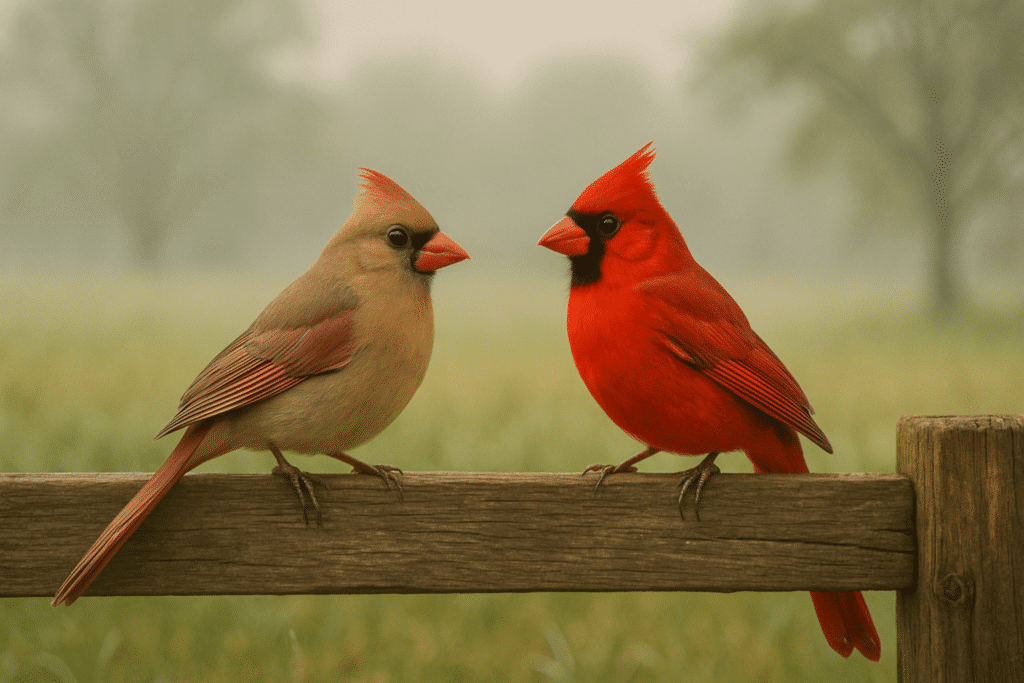
What’s the Female Cardinal Reproductive Routine?
The courtship starts with the male feeding the female little bits of food — beak to beak. It’s romantic in a way only cardinals could pull off.
Then comes the family:
- 3–4 eggs per clutch.
- Eggs are usually whitish with speckles of blue, green, or gray.
- Female cardinal does most of the sitting on eggs.
- Incubation: 12–13 days.
- Fledging: Babies leave the nest about 10–11 days after hatching.
And cardinals aren’t lazy. They’ll often raise 2–4 broods a year if conditions are good.
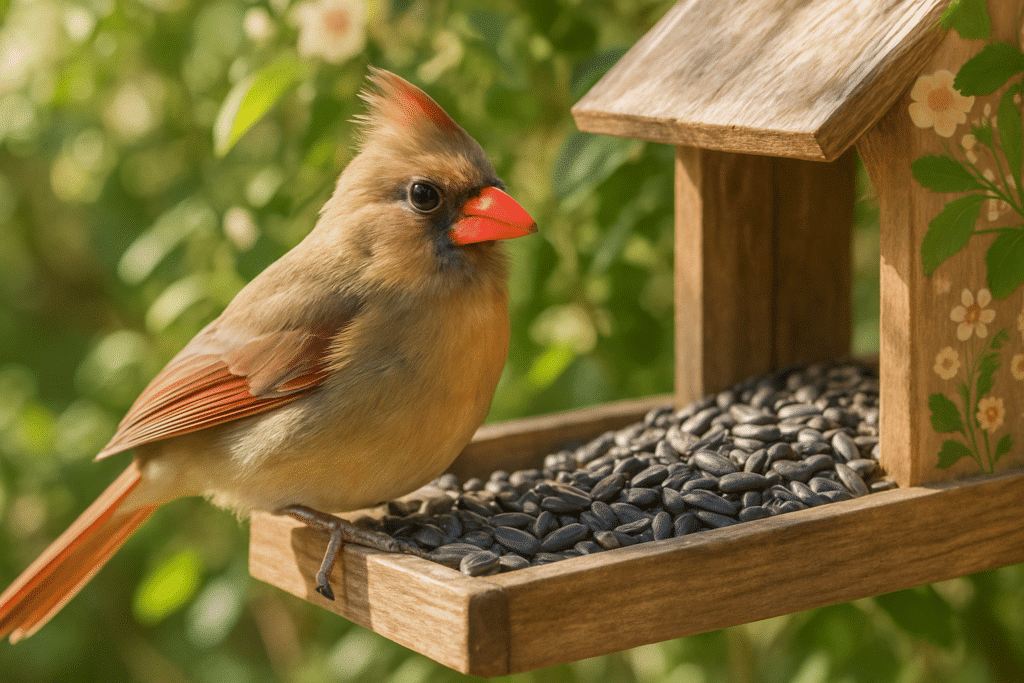
What Do Female Cardinals Eat?
Seeds and fruits are their bread and butter… or should I say berry and millet?
Favorites include:
- Black oil sunflower seeds
- Safflower seeds
- Berries (like dogwood, sumac, mulberry)
- Grains
- Insects (especially during breeding season)
Why the switch to bugs during nesting?
Young chicks need protein to grow. Mom and Dad hustle to bring soft-bodied insects — think caterpillars and beetles — back to the nest.
And that thick, curved beak? It’s built to crack even the toughest seeds.
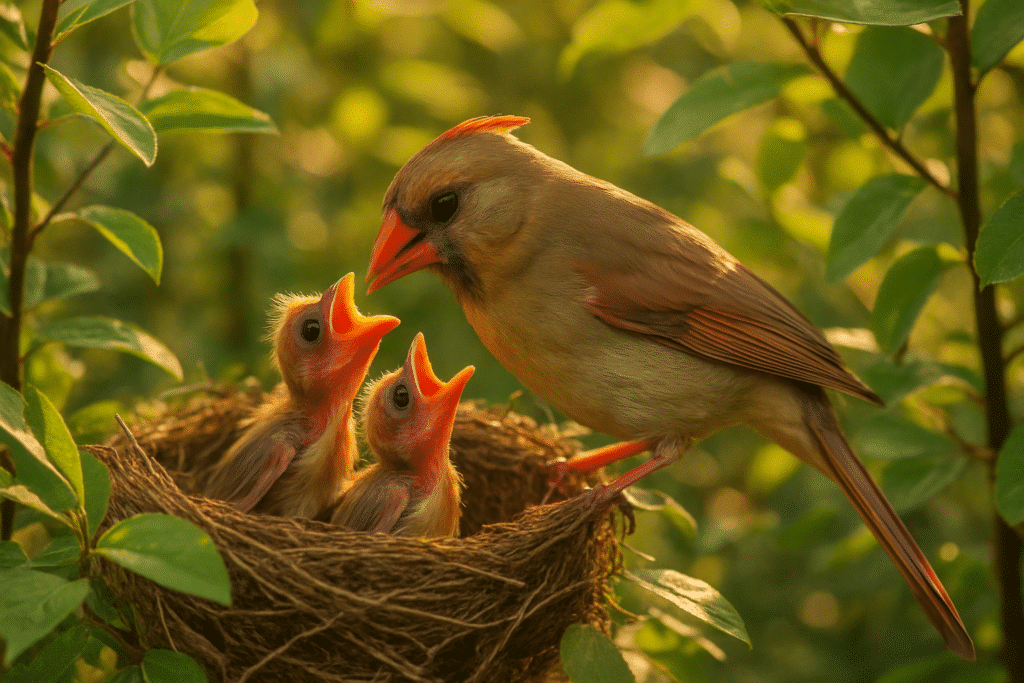
Where Do Female Cardinals Live?
You’ll find female cardinals anywhere you find a mix of shrubs, trees, and open spaces.
Top spots include:
- Suburban backyards
- Urban parks
- Woodland edges
- Overgrown fields
- Gardens with berry bushes
They’re not picky — if there’s food, shelter, and a safe spot for a nest, they’re moving in.
Interestingly, cardinals have expanded their range northward in the past century, likely helped by warmer winters and backyard feeders.
Today, their home turf stretches:
- Across the eastern and southern U.S.
- West to Arizona and New Mexico
- North into parts of Canada
- Down through Mexico and into Central America
They’ve even popped up on Bermuda and Hawaii (thanks to introductions).
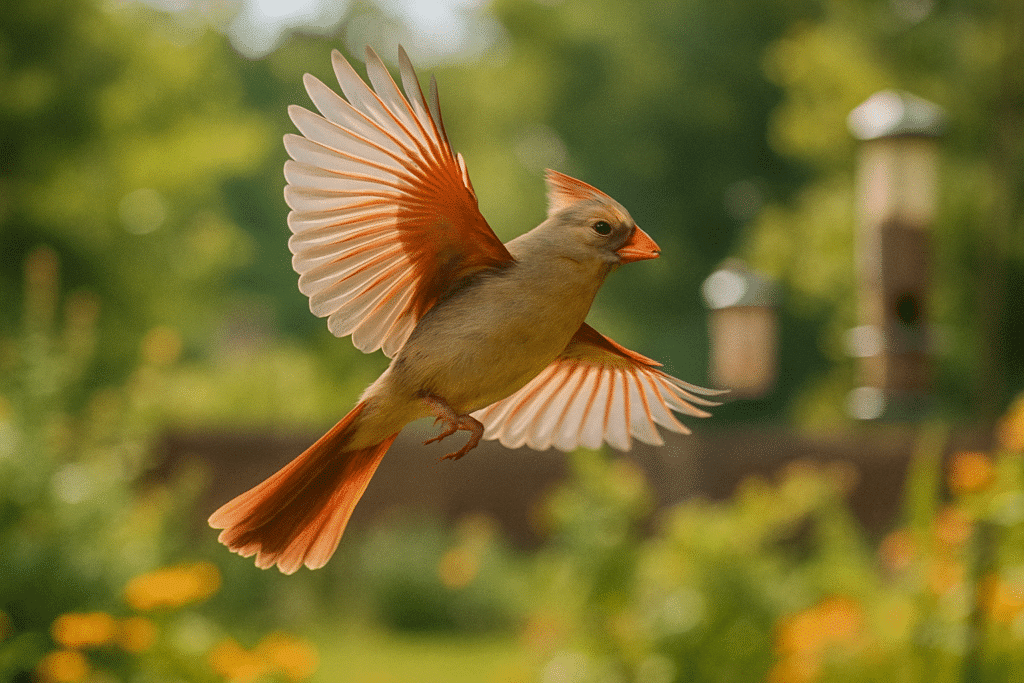
Why Are Cardinals So Popular With People?
You see them everywhere:
- State bird for seven U.S. states
- Holiday cards
- Home décor
- Tattoos
- Memorial symbolism
People love them because they’re easy to spot year-round, and they seem to stick around through thick and thin. Plus, that bright pop of color (even in females with their reddish highlights) feels like a little natural miracle when everything else looks gray.
And legally — you can’t own one.
The Migratory Bird Treaty Act makes it illegal to keep cardinals as pets in the U.S.
Want to lure female cardinals into your yard?
Here’s your game plan:
- Put out black oil sunflower and safflower seeds.
- Plant native berry bushes.
- Add a birdbath with a dripper or fountain.
- Grow dense shrubs for nesting cover.
- Skip pesticides (those insects matter).
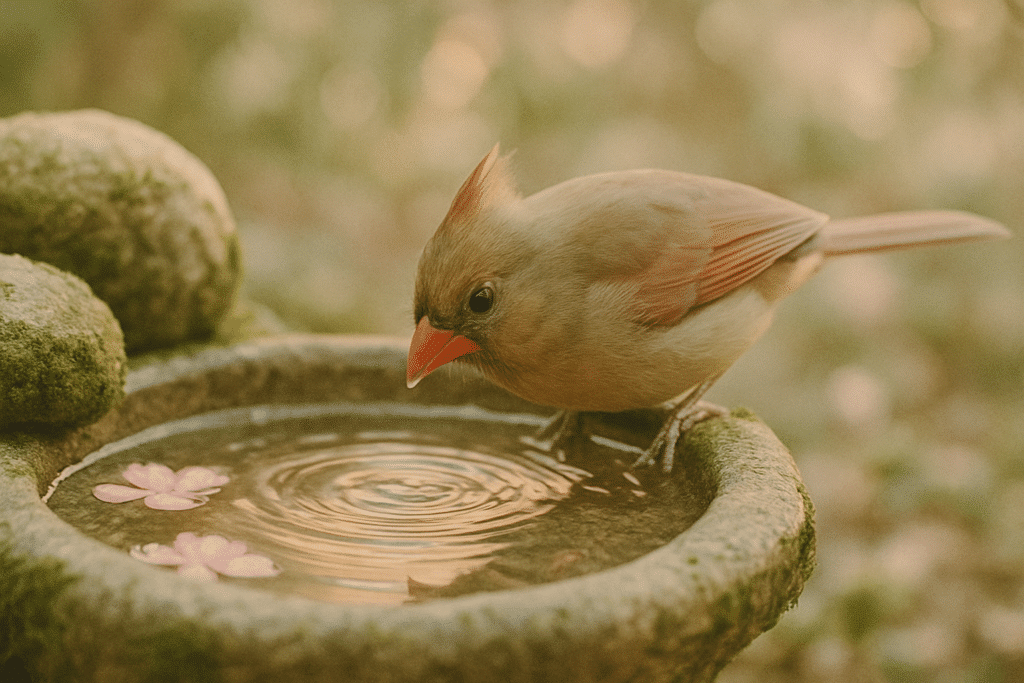
FAQs About the Female Cardinal
Q: Are female cardinals as colorful as males?
No. Females have warm tan and brown plumage with red accents, while males are bright red all over.
Q: Do female cardinals sing?
Yes! Female cardinals sing beautiful, complex songs that often rival the males.
Q: How can I attract female cardinals to my yard?
Offer sunflower and safflower seeds, plant berry-producing shrubs, and provide dense, low cover for nesting.
Q: Are female cardinals aggressive?
They can be territorial, especially during nesting season. You might catch them defending their patch if another bird gets too close.
Q: Where do cardinals go in winter?
Nowhere. They’re year-round residents across their range, relying on natural food and bird feeders during the colder months.
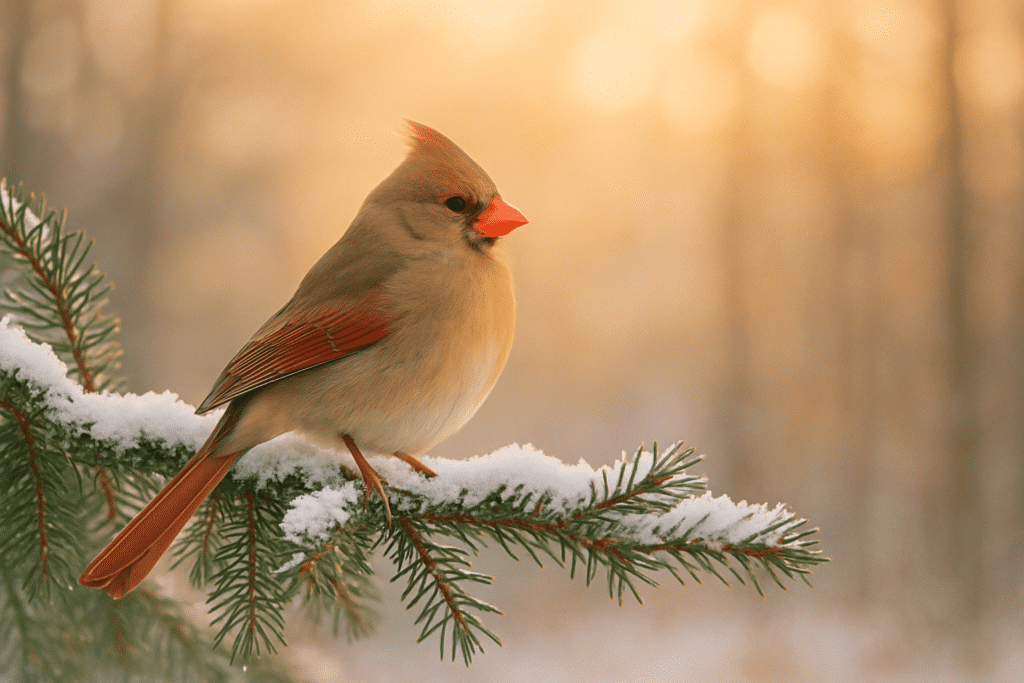
The Quiet Power of the Female Cardinal
The female cardinal isn’t flashy — but she’s tough, clever, resourceful, and absolutely beautiful once you really see her.
From her delicate reddish highlights to the bold songs she sings while protecting her nest, she proves that strength doesn’t always scream for attention.
Next time you spot a soft, tan figure perched in your backyard, pause for a second — because you’re looking at one of nature’s most quietly impressive success stories.